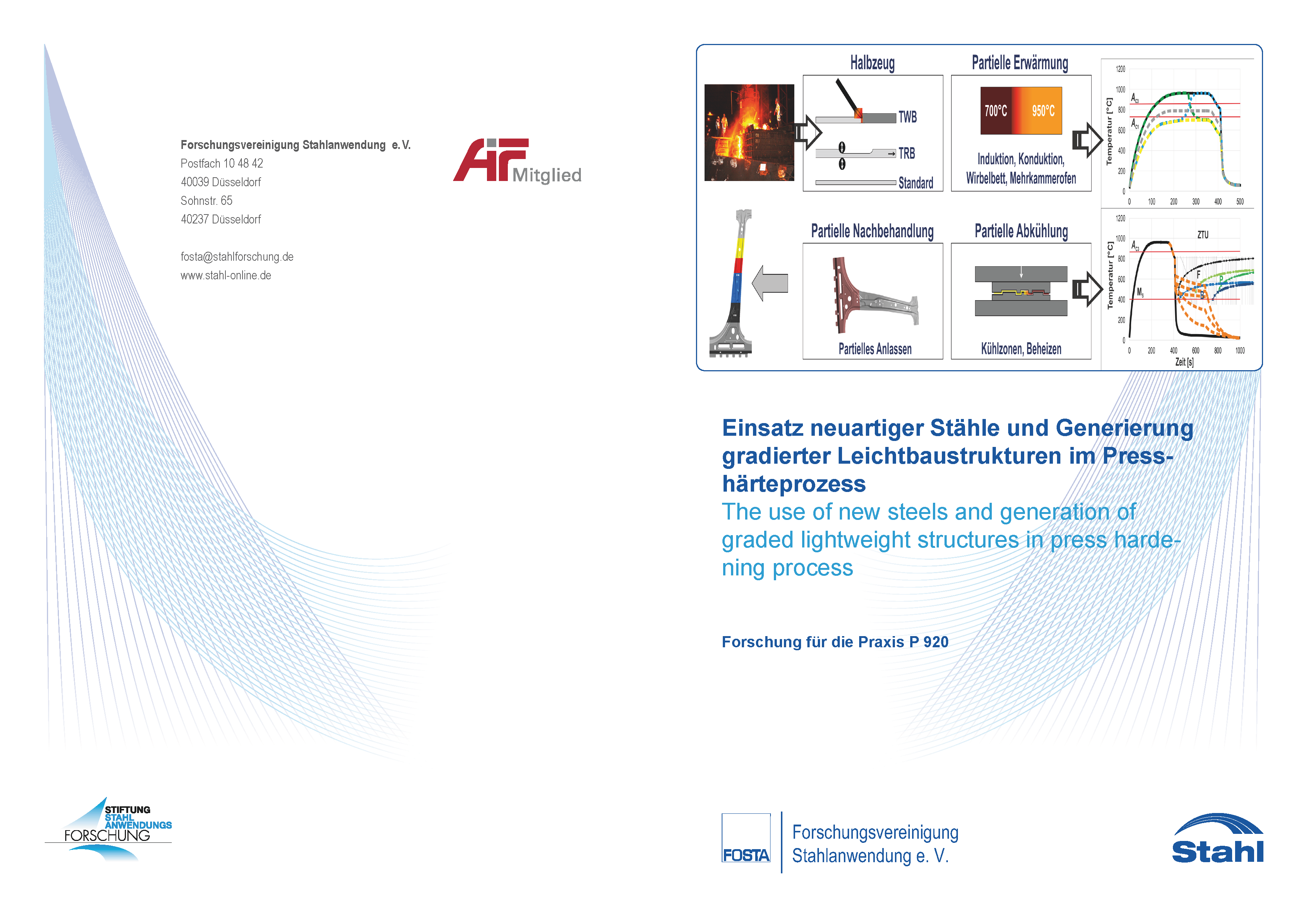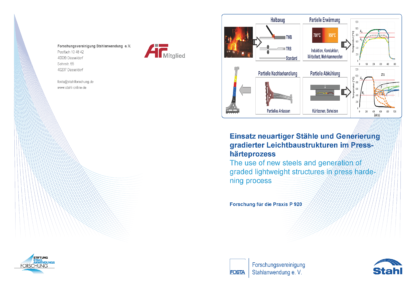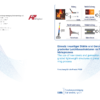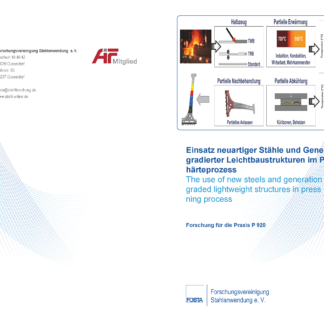Description
P 920 – The use of new steels and generation of graded lightweight structures in press hardening pro-cess
Press hardening is a well-established manufacturing method to produce high strength steel parts for the body-in-white. The process comprises a heating of the blank to temperatures beyond austenitisation temperature and a subsequent forming and quenching by watercooled tools. The press hardening process is capable of producing very complex part shapes with a high strength level of > 1500MPa. Today, the press hardenable steel grade 22MnB5 is the most common material used, achieving a strength level of 1500MPa–1600MPa. Further developments of new steel grades address even higher tensile strengths after the press hardening process.
By modifying process parameters of the press hardening process it becomes possible to generate areas with different mechanical properties within a given component. Therefore, a load adapted part design can be achieved, representing a key factor for the production of lightweight and resource-efficient body components.
Due to restrictions in changing process parameters and a lack of available steel grades for the press hardening process, the degrees of freedom to vary mechanical properties are limited. Thus, the full lightweight potential cannot be utilized. Accordingly, the aim of this project is to widen the range of mechanical properties, in particular in the direction of lower strengths, achievable by the press hardening process. Besides developing a new steel grade (route 1), also a partial austenitisation process applied to existing steel grades (route 2) is investigated.
Because many parameters affect the final mechanical properties of the components after the press hardening process, suitable simulations are used to ensure a tensile strength after hardening ranging between 1200MPa and 1300MPa. In the present project, the simulation software JMatPro is used to calculate e.g. the tensile strength of the material depending on the alloy composition and the temperature-time treatment. In the case of the partial austenitisation process, experimental investigations are performed in order to validate the calculated process windows. In the case of the development of the new steel grade, alloys, based on the simulations, are casted and characterized. Finally, both routes were applied to produce demonstrators for component tests.
In the course of this project, both development ap-proaches were successfully implemented. Despite of different microstructures, the same tensile strength of about 1200MPa has been achieved. In contrast, the forming behaviour was completely different. Based on the experimental investigations, in particular the new steel grade revealed a very homogeneous microstruc-ture after the press hardening process. Accordingly, an excellent forming behaviour during crash tests of the demonstrators was observed.
The research project was carried out at Lehrstuhl für Leichtbau im Automobil der Universität Paderborn. FOSTA has accompanied the research work and has organized the project funding from the Foundation of Steel Application Research, Essen.
Only available in german language.
Published in:
Janurary 2019




